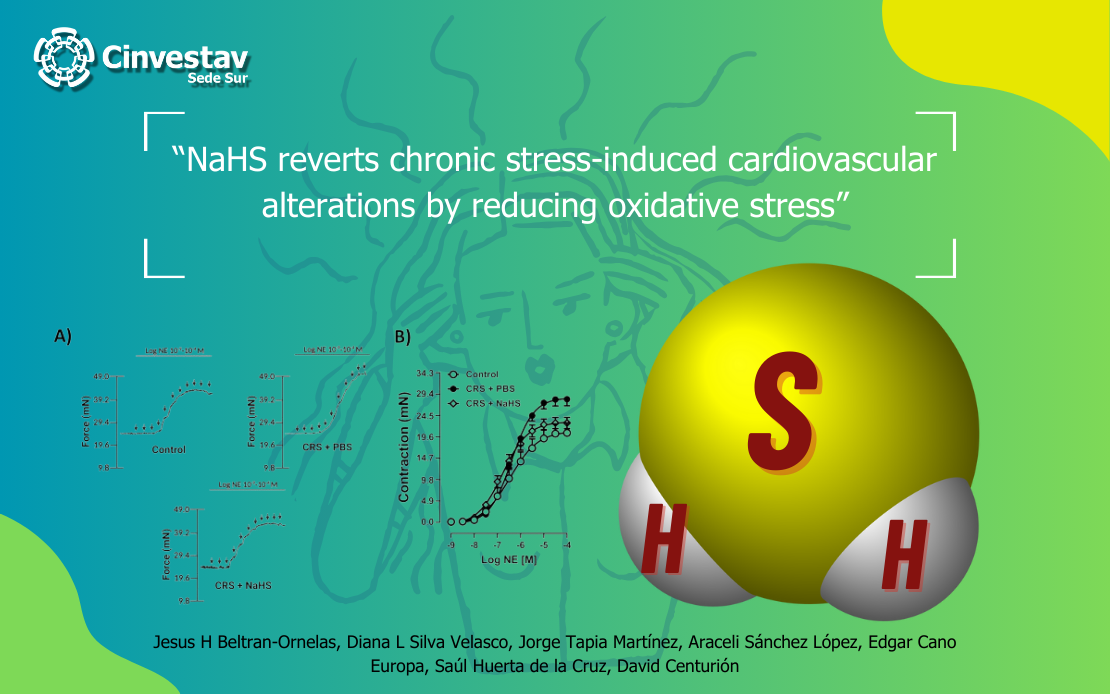David Centurión- NaHS reverts chronic stress-induced cardiovascular alterations by reducing oxidative stress

11 de enero del 2024
Invitamos a leer el artículo: " NaHS reverts chronic stress-induced cardiovascular alterations by reducing oxidative stress", realizado por el Dr. David Centurión, Investigador de Cinvestav Sede Sur
Autores: Jesus H Beltran Ornelas, Diana L Silva Velasco, Jorge Tapia Martínez, Araceli Sánchez López, Edgar Cano Europa, Saúl Huerta de la Cruz, David Centurión
Abstract: Chronic stress induces a group of unrecognized cardiovascular impairments, including elevated hemodynamic variables and vascular dysfunction. Moreover, hydrogen sulfide (H2S), a gasotransmitter that regulates the cardiovascular system, decreases under chronic stress. Thus, this study assessed the impact of NaHS (H2S donor) on chronic restraint stress (CRS)-induced cardiovascular changes. For that purpose, male Wistar rats were restrained for 2 h in a transparent acrylic tube over eight weeks. Then, body weight, relative adrenal gland weight, serum corticosterone, H2S-synthesizing enzymes, eNOS expression, reactive oxygen species (ROS) levels, lipid peroxidation, and reduced glutathione/oxidized glutathione (GSH2/GSSG) ratio, were determined in the thoracic aorta. The hemodynamic variables were measured in vivo by the plethysmograph method. The vascular function was evaluated in vitro as vasorelaxant responses induced by carbachol (CCh) or sodium nitroprusside, and norepinephrine (NE)-mediated vasocontractile responses in the thoracic aorta. CRS increased: (1) relative adrenal gland weight; (2) hemodynamic variables; (3) vasoconstrictor responses induced by NE, (4) ROS levels, and (5) lipid peroxidation in the thoracic aorta. Additionally, CRS decreased: (1) body weight; (2) vasorelaxant responses induced by CCh; (3) GSH content and (4) GSH2/GSSG ratio. Notably, NaHS administration (5.6 mg/kg) restored hemodynamic variables, lipid peroxidation and attenuated the vasoconstrictor responses induced by NE in the thoracic aorta. In addition, NaHS treatment increased relative adrenal gland weight and the GSH2/GSSG ratio. Taken together, our results demonstrate that NaHS alleviates CRS-induced hypertension by reducing oxidative stress and restoring vascular function in the thoracic aorta.
Keywords:chronic resrtaint stress, hydrogrn sulfide, vascular dysfunction, oxidative stress, hypertension